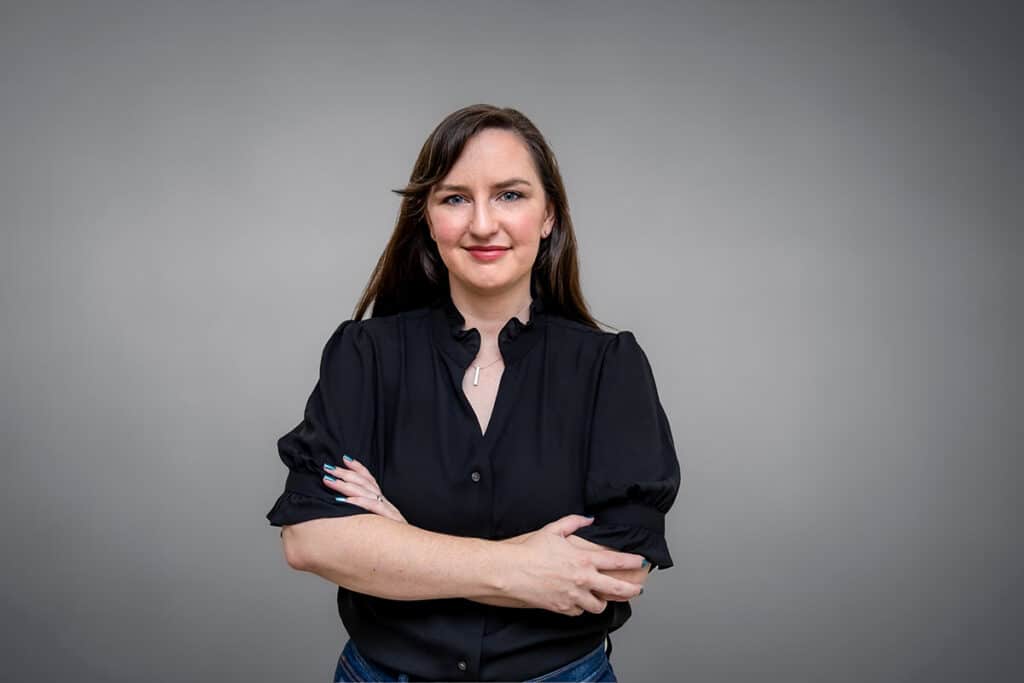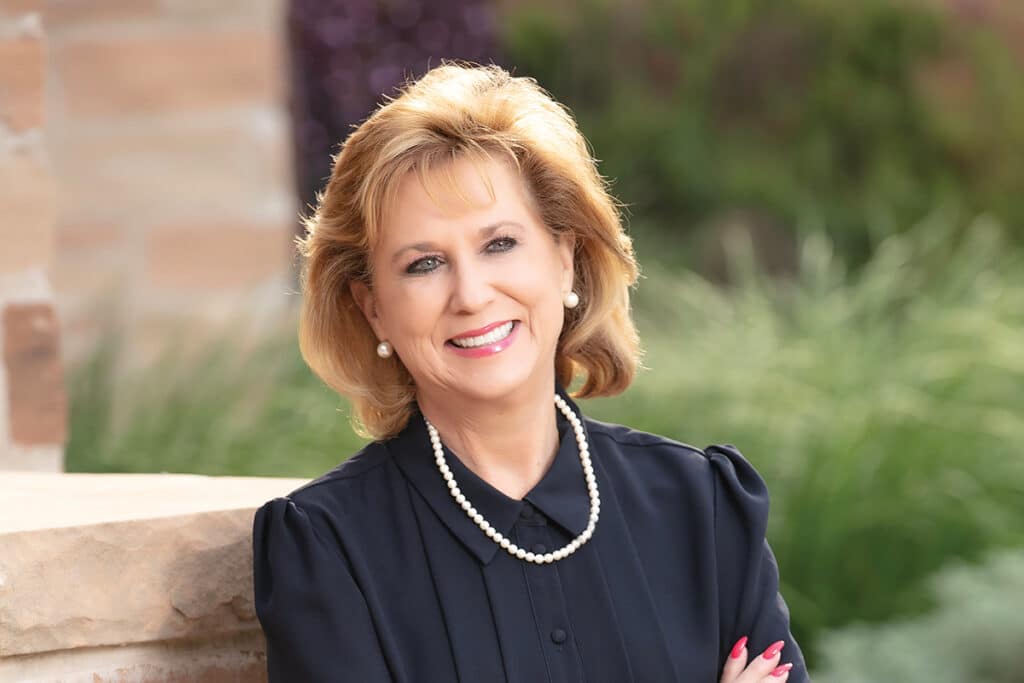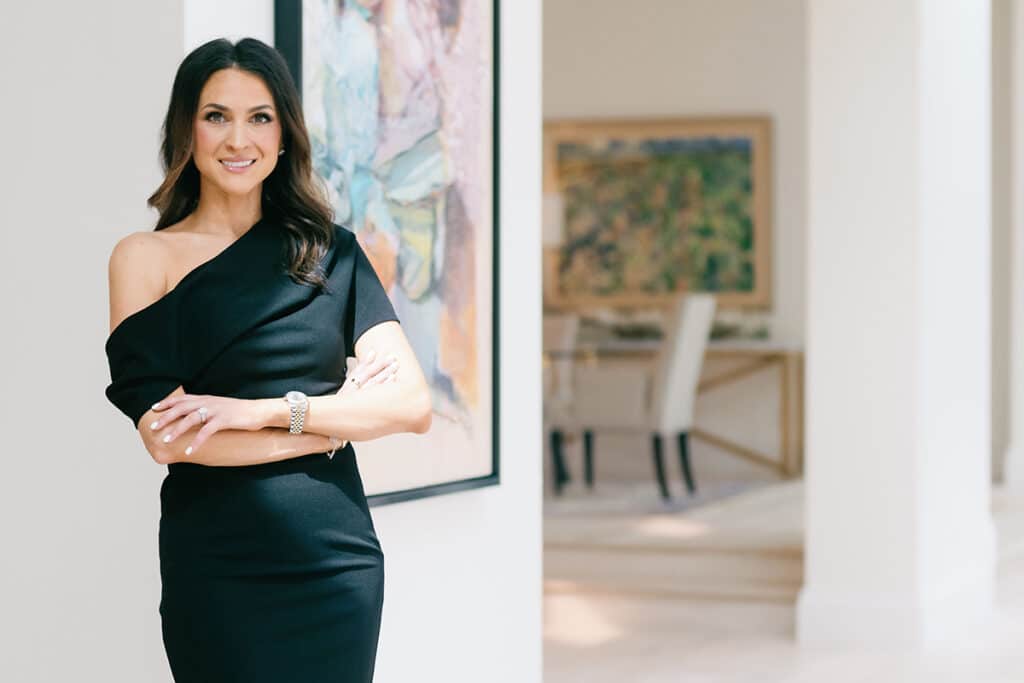If you watch television or the movies, women lawyers seem to be cut from the same cloth: Young, pretty, idealistic assistant district attorneys who want to save the world on shows like Law & Order; sexy lawyers in slinky clothes, martinis in hand, dancing the night away on Ally McBeal; or cute, winsome characters like Reese Witherspoon’s Elle Woods, who takes over Harvard Law with a smile and a great wardrobe in the film Legally Blonde.
Love it or hate it, pop culture has elevated women in law to a whole new place. But, unlike what is depicted on TV and movies, a lot of real world legal activity takes place outside the courtroom and out of the glare of the media spotlight.
Are women lawyers stereotyped by the entertainment industry? You bet. Is that a bad thing? Not necessarily, say several local women who chose law as their life’s work. “I think it’s really great that there are enough of us that we can be stereotyped,” says San Antonio attorney Nancy Kerr, a partner in Fulbright and Jaworski’s San Antonio office. “That in itself is progress,” she jokes.
Progress, indeed.
The Supreme Court sends women home
The first woman lawyer in America was admitted to the Iowa state bar in 1869, at a time when states could make their own decisions as to whether they would allow a woman to practice law. But first, women had to get accepted into a law school: Women hoping to enter “elite” law schools in the late 19th century faced blanket rejection. Just a few years later, in 1873, the Supreme Court declared women unfit to practice law and best suited for a domestic life.
Fast-forward nearly 100 years: By the 1960s, women in law were still few and far between. Fewer than 4 percent of all lawyers in the United States were women, meaning that any woman who was intrepid enough to even enter law school did so knowing she would have the additional challenge throughout her career of being female within an almost exclusively male institution.
When Jan King, a partner at Jackson Walker, LLP, was in law school at The University of Texas in the late 1970s, women made up about 25 percent of her class. She was only the second woman to join the firm that hired her right out of law school when she graduated in 1978. “The firm had a club membership that only allowed male members,” she recalls. As more women joined the firm, they lobbied for change, asking the club to admit women. The women won.
Pat Kalmans recalls a smaller number. “Enrollment was less than 10 percent women when I started law school back in 1975,” she says. Kalmans said she chose Georgetown University in Washington, D.C., to study law because the environment there approximated equality. “I wanted to put myself in an environment where women were treated as equals,” she says. Kalmans kept doing that, even after law school. She says she chose to work in firms where women had status. It turned out to be self-affirming for her. Today, she and two other women are the partners/owners of Habbeshaw, Kalmans and Schwarz, P.C.
“Maximizing flexibility in my life was important to me, and I believed I could get that flexibility if I started my own firm,” says Kalmans. “I didn’t want to meet someone else’s expectations of how many hours I should bill. I wanted time with my children and time to serve my community.”
Kalmans, who specializes in business litigation cases, remembers the trepidation she felt about starting her own firm. “I told one of my partners, Penny Habbeshaw, that if we weren’t turning a profit in three months, maybe we should get out.” The women did turn a profit that quickly. Now, 15 years later, the all-woman firm is doing quite well. “It took a lot of courage and optimism, but I got what is important to me without having to sacrifice much,” she says.
Diana Geis, who practices business law as a partner with Oppenheimer, Blend, Harrison and Tate, left a large firm to start her own practice and found that she preferred the scope and resources available to her in a larger firm, so she went back. “I like the diversity of the types of law practiced here,” says Geis. “The benefit to me as a trial attorney is that when I’m working on a complicated case, I can go to the other lawyers in the firm and get the benefit of their expertise. It’s good for me and it’s good for my clients.”
Kim Ramsey agrees on the size issue. “I’ve never worked for a small firm,” says Ramsey, a partner with Akin, Gump, Strauss, Hauer and Feld. “Larger firms generally offer greater opportunities and resources. I wouldn’t be able to practice my areas of specialization in a small firm.”Jo Chris Lopez says her firm is “just right.” The family law partner with Shaddox, Compere, Walraven and Good describes her 14-attorney firm as midsized. “We’re still small enough that we know each other well,” she says. Lopez and her partners go on annual retreats where they have a chance to reconnect with each other in a relaxing setting.
Baby steps and giant leaps
It’s not easy to chip away at old institutions, and even though women are now firmly entrenched in the profession, there are vestiges of that impenetrable fraternal structure still in place.
“Our barriers are golf tournaments and dove hunts,” says Kerr. “There are wonderful client development opportunities that are great for men, but not so much for women.” Kerr and other women in her firm started a group they call the Women’s Initiative Network to address the challenge of identifying business development opportunities that are either gender neutral or that allow the firm’s female partners to take the lead.
Since women business executives rose up right alongside women in law, there’s another benefit to what the women in Kerr’s firm are doing: Business development opportunities aimed at women are right on target with their firm’s female clients and business prospects. Kerr specializes in estate planning, helping her clients ensure financial security for themselves and their families. She feels this job is her calling. “I don’t believe in accidents,” she says firmly.
Kerr was a mother with young school-aged kids when she told her husband she planned to enter graduate school at The University of Texas at San Antonio. “I wanted to study urban planning,” she says. But a class in environmental law captured her interest, and an aptitude test pointed toward a legal career. “You don’t know how things will work out, but somehow, that path opens up,” she explains.
She should have known. Her father, Forney Nowlin, was a well-respected lawyer and businessman in San Antonio for more than 50 years, and her brothers became lawyers as well.
A lawyer’s life
During the 1980s and ’90s, Texan women became lawyers at an astounding rate. According to the State Bar of Texas, the number of women attorneys in the state increased by more than 300 percent between 1982 and 2003, while male attorneys accounted for a mere 50-percent increase during that same period of time.
That kind of growth turned the profession on its ear. For as long as law firms have existed, there was an established path all lawyers followed: Finish law school, join a firm as an associate, spend the first six or seven years working at a brutal pace to get the coveted invitation to become a partner in the firm. Once a partner, it was generally expected that a lawyer would stay with the firm until retirement. And during all those years, consistently long hours at the office were part of the deal.
That path didn’t have any room for maternity leave or work options that allowed a lawyer time for family and community work. How could a woman succeed in law if the only path to success was the traditional partnership track?
Getting sidetracked
Today, the partnership track is still the main career thoroughfare, and many lawyers work with that destination in mind. “Law firms know they need to accommodate, retain and promote women lawyers,” says Ramsey. It’s common now for law firms to have “sidetrack” options that give lawyers the chance to work a lighter schedule for several years or to take a leave of absence to keep the work/life balance in sync.
Many law firms use lawyers in “of counsel” or contract arrangements that allow even greater flexibility in work schedules. It’s no surprise that many of the lawyers taking advantage of these options are women.
“Having options is a really positive development,” says Kerr. “It allows talented and committed people to still be part of a team.” Kerr says that when she started her career, those options didn’t exist. “If I had been offered a choice, I probably would have worked in an ‘of counsel’ relationship when my kids were younger. I’m glad I stayed where I was because things happen for a reason. I’m a partner now, and I’m proud of that accomplishment.”
Kerr did leave the partnership track for about four years: “My brother, Bill, was terminally ill, our mother was struggling with Alzheimer’s disease, and our daughters were teenagers. Getting off the partnership track was absolutely the right thing to do at the time, so I could devote time to my family when they needed me.”
“Women on the mommy track weren’t taken seriously when I started my career,” says Geis, who recalls her own heartbreak at having to leave her infant with a nanny when she returned to work as a young associate. “Now, my male partners are seeing their wives balance career and family, and I think it’s made everybody more willing to adapt.”
The balancing act
“Women still have the lion’s share of family responsibilities,” says Donna McElroy, a labor and employment attorney with Cox Smith Matthews, Inc. “Everybody has to find their own comfort zone that fits with career and personal goals.”
What fits for McElroy, who describes herself as a “full-scale, straight-ahead shareholder” in the firm where she is a partner, is what she calls a traditional life that’s done in a nontraditional way: She is the primary breadwinner in her household. Her husband works as a consultant, which gives him flexibility to set his own pace and to be available for their three children, ages 6, 8 and 9. “When you get married and want to start a family, you need to have a serious conversation about your belief system, how you want your kids raised, and how it all fits with your career and personal goals. This arrangement works well for us,” she says.
When Jennifer Durbin started her career, she didn’t have family needs competing for her attention. “I didn’t have as much to balance as a young attorney, other than studying hard to learn the practice,” she says. Durbin, who is an insurance attorney in her own firm, Allen, Stein & Durbin, now has three boys, a 16-year old and 11-year old twins. “As the boys’ schedules became more active, I incorporated their schedules into mine,” she says. “Their activities are on my business calendar, along with my work-related activities. I’ve been in court and requested a recess so I could be on time to get them where they need to go.”
As easy and organized as that sounds, Durbin says there are times when commitments collide. She confides, “There are times when I feel like I should have spent more time on a kid issue or a work issue and times when I find myself working late at night, after dinner, homework and bath.” Durbin is fortunate, she says, to have a husband who helps, and she has surrounded herself with “understanding people.”
Jo Chris Lopez keeps saying how lucky she is. Lucky to do work that she loves, lucky to work with attorneys in a practice where mutual respect reigns supreme. Lucky to have a supportive family. “It would be a lot harder if I were doing shift work for low pay,” she says. “Other women struggle a lot more than I do with just as much on their plate and not being compensated well for what they do.”
Lopez, who specializes in family law, started having children about the same time she was made a partner in her firm, back in the 1980s. She says that she and her partners have an understanding: that while hard work is the accepted norm, “Each of us has had a life issue — pregnancy, illness — where we needed to change our priorities. We take up for each other. That’s how we want our business to run.”
Abigail Kampmann has found greater flexibility and rewards by working two jobs. She’s a vice president and the assistant general counsel for Performance Companies, a business that owns new car dealerships in San Antonio and in other cities across the nation. She’s also in an “of counsel” relationship with Bayern & Aycock, offering her expertise in business law. Kampmann, who is 38, married and the mother of a first-grader and a pre-kindergartener, says that while work keeps her busy, she likes to have time to devote to family and volunteer work in the community.
Like many other women in law, Kampmann volunteers her time and skills to several community initiatives. She devotes time to the Spurs Foundation and volunteers her estate-planning expertise to the Wills Clinic project, which helps people establish their wills. “Roughly 75 percent of people don’t have a will,” she says. “Everybody needs a will, and that need crosses all economic lines. We reach out in the community to make that happen for people who otherwise wouldn’t have access to this kind of help.”
Kampmann is also part of the Mediation Center project, which, in conjunction with the Bexar County Dispute Resolution Center, teaches kids in area schools how to use words instead of violence to resolve conflicts.”I don’t know many lawyers who work fewer than 60 hours a week,” says Kampmann. “On top of that, most of us are dedicated to giving back to the community in some way.”
Some never find balance. “A lot of women lawyers don’t continue to practice,” Kampmann says. “Family responsibilities win, and they just drop out.”
Author: Susan Sheffloe Speer
Photographer: Janet Rogers




